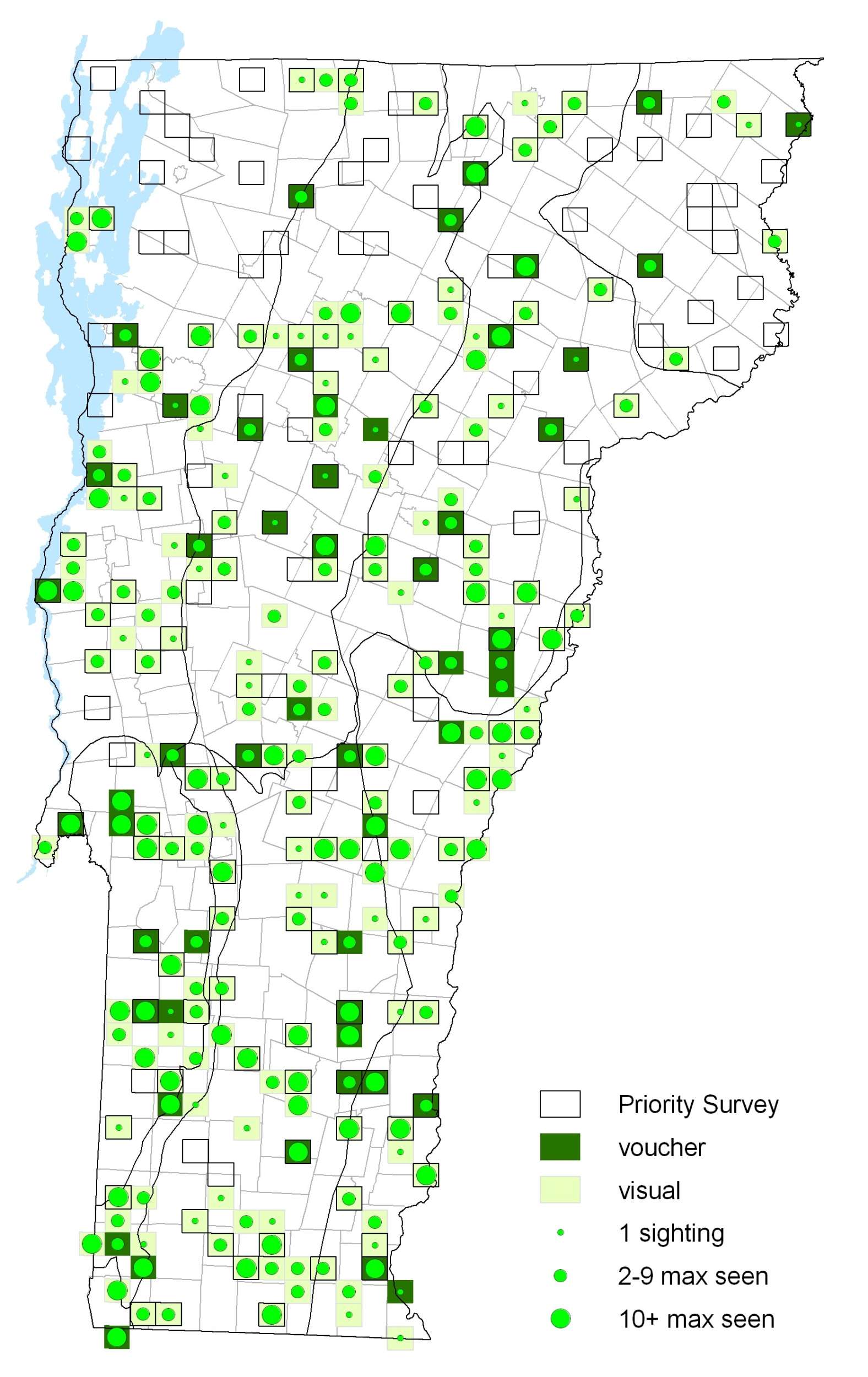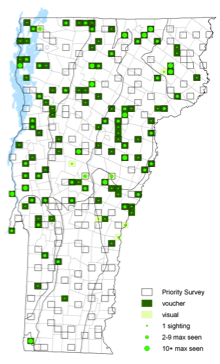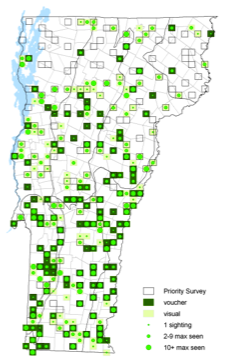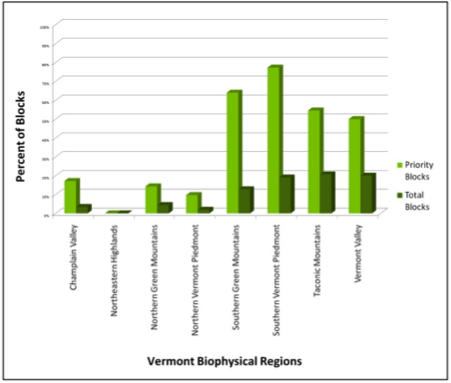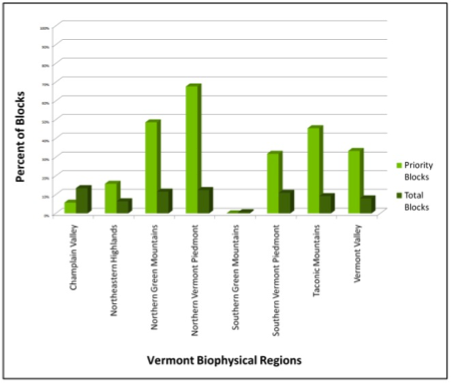|
Resident Conservation Status North American Range |
A denizen of open, scrubby habitats, the Common Wood Nymph is easy to identify, but highly variable even within its northern range. Formerly thought to be separate species, the two most common forms are those with a bright, yellow forewing patch (C. p. pegala), and those who lack the yellow patch (C. p. nephele). Males patrol for females with a dipping, erratic flight through the vegetation while females stay perched in wait. They are rarely seen feeding and die soon after mating. In late summer, females lay eggs singly on hostplant leaves. Caterpillars hatch but do not feed, instead overwintering and feeding in spring. Females emerge later than males.
Identification
Geographically variable. Wings are brown. Upperside of forewing has two large yellow-ringed eyespots. Lowerside of hindwing has a variable number of small eyespots. Southern and coastal butterflies are larger and have a yellow or yellow-orange patch on the outer part of the forewing. Inland butterflies are smaller and have the yellow forewing patch reduced or absent.
Flight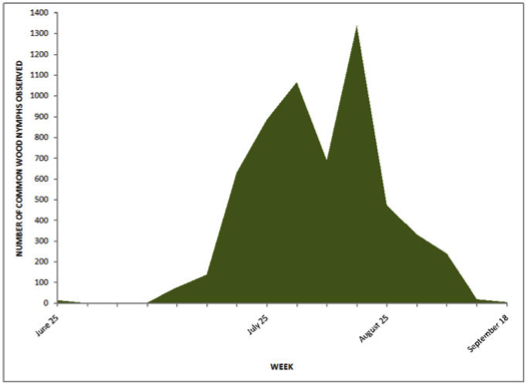
One brood found during VBS. Extreme dates: 25 June 2006 in Rochester (G. Hanisek), 25 June 2007 in West Haven (R. Pilcher), 18 September 2002 in Thetford (J. Nicholson, A. Aversa), and 18 September 2006 in Glastenbury (T. Armata).
Distribution and Habitat
Found throughout Vermont during VBS, but less common in very northern areas of Champlain Valley and the Northern Green Mountains. C. p. pegala was found in southern Vermont and C. p. nephele was found in northern and northeast regions of the state, with intergrades between the two forms in many areas. Scudder (1889) wrote that the distributional limits of C. p. nephele and the more widespread C. p. pegala meet between the 45 F and 50 F annual temperature isotherm. C. p. nephele reaches the southern limit of its New England range in the highlands of northwestern Massachusetts. Common Wood Nymph prefers open, sunny habitats like fields and open meadows. Hostplants are various grasses such as Purpletop (Tridens flavus) and Kentucky Bluegrass (Poapratensis).
C. p. nephele C. p. pegala
